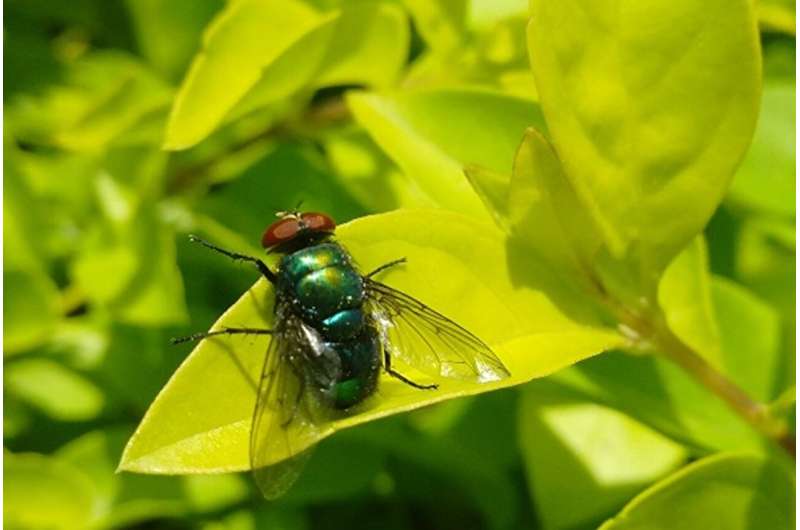This article has been reviewed according to Science X's editorial process and policies. Editors have highlighted the following attributes while ensuring the content's credibility:
fact-checked
peer-reviewed publication
trusted source
proofread
The common green bottle fly Lucilia eximia shows a deep and significant genetic split

A deep and significant genetic split was observed in the forensically important common green bottle fly, Lucilia eximia, which could have important implications for forensic and medical science, a new study published in the Journal of Medical Entomology shows. The researchers explored the genetic variability of the common green bottle fly in Colombia using two mitochondrial genes.
"Many of us regard the common green bottle fly as an annoying fly, despite its valuable and unexpected uses. In medical science, they can be used in controlled myasis where their larvae remove necrotic tissue from chronic wounds, and in forensic science, its developmental rate helps forensic entomologists to estimate the time of death of a corpse.
"Also, entomological evidence provides valuable information concerning the circumstances of death, including season, location, movement or storage after death, use of drugs, and even linking child neglect. However, all the above-mentioned uses rely on accurate species and subpopulation identification," says first author and Doctoral Researcher Juliana Pérez-Pérez of the University of Eastern Finland.
Morphology-based identification of insects has limitations. In a best-case scenario, taxonomic keys are available, but they can be enormously difficult to use, especially when identifying immature stages or morphologically similar species. These limitations are noteworthy in previous research that shows the common green bottle fly to exhibit different color patterns and genetic variability, which could indicate the possible presence of several species within. However, the molecular variability of the common green bottle fly is poorly known.
The new study used DNA-based methods to study the genetic variability of Lucilia eximia. The researchers found two molecular groups. The origin of the divergence has yet to be discovered. Examining whether the groups have diverse ecological and biological behaviors could have a significant impact on the use of green bottle flies in forensic and medical science. The findings could have relevant implications for estimating the time since death using evidence from insects.
More information: Juliana Pérez-Pérez et al, Evidence of two mitochondrial lineages and genetic variability in forensically important Lucilia eximia (Diptera: Calliphoridae) in Colombia, Journal of Medical Entomology (2023). DOI: 10.1093/jme/tjad031
Journal information: Journal of Medical Entomology
Provided by University of Eastern Finland



















